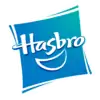Hi Ho! Cherry-O
Hi Ho! Cherry-O is a children's put and take board game currently published by Hasbro[1] in which two to four players spin a spinner in an attempt to collect cherries. The original edition, designed by Hermann Wernhard and first published in 1960 by Whitman Publishers, had players compete to collect 10 cherries. During an update in 2007,[2] the rules were updated to include a cooperative play variant, where players cooperate to remove all fruit from the board before a bird puzzle is completed. In 2015, Winning Moves published a classic edition.
| Designer(s) | Hermann Wernhard |
|---|---|
| Publisher(s) | Hasbro |
| Publication date | 1960 |
| Players | 2 to 4 |
| Setup time | < 5 minutes |
| Playing time | < 10 minutes |
| Random chance | Complete |
| Age range | 3 and up |
| Skill(s) required | Counting |
Gameplay
Each player starts the game with an empty basket and 10 cherries on their tree. Players take turns spinning the spinner and performing the indicated action. The spinner is divided into seven sections:
- Take one cherry off of the tree
- Take two cherries off of the tree
- Take three cherries off of the tree
- Take four cherries off of the tree
- Dog: Replace cherries on the tree: two if the player has at least that many, or one if they have only one. If the player's bucket is empty, this space has no effect.
- Bird: Same effect as the dog
- Spilled basket: Return all cherries to the tree
The first player to collect all the cherries from their tree and call "Hi Ho! Cherry-O" wins the game.
Analysis
The game length can be determined using a Markov chain, yielding the following results:[3]
- Minimum game length: 3
- Average game length: 15.8
- Maximum game length: Unbounded
- 25th percentile: 7 moves
- 50th percentile (median): 12 moves
- 75th percentile: 21 moves
- 95th percentile: 40 moves
References
- "HI HO! CHERRY-O Game". Hasbro. Retrieved 2009-07-16.
- "Hi Ho! Cherry-O". BoardGameGeek. Retrieved 2008-08-10.
- "HI HO! CHERRY-O Mathematics". Jeffrey Humpherys. Retrieved 2011-01-11.
External links
- Hasbro's Hi Ho! Cherry-O product page
- Hi Ho! Cherry-O at BoardGameGeek Includes many pictures of various game editions.
